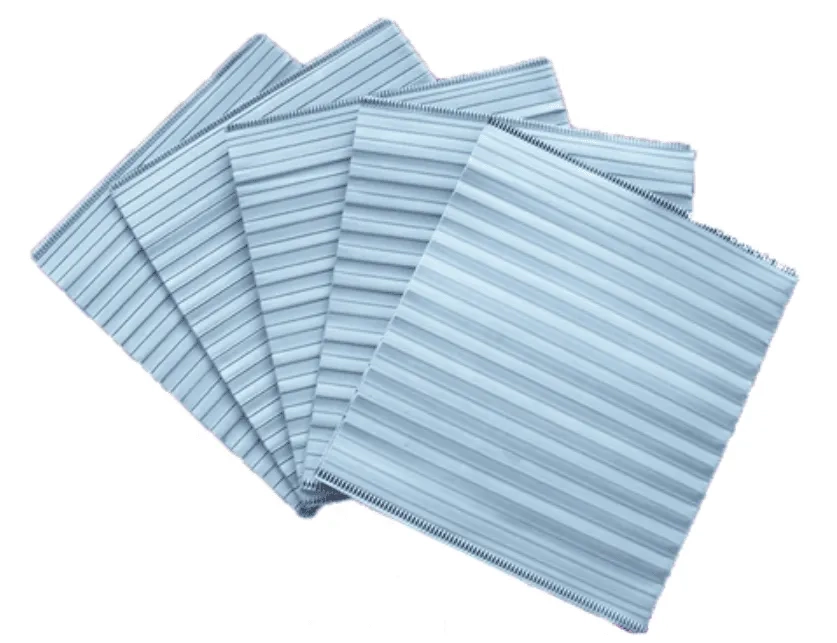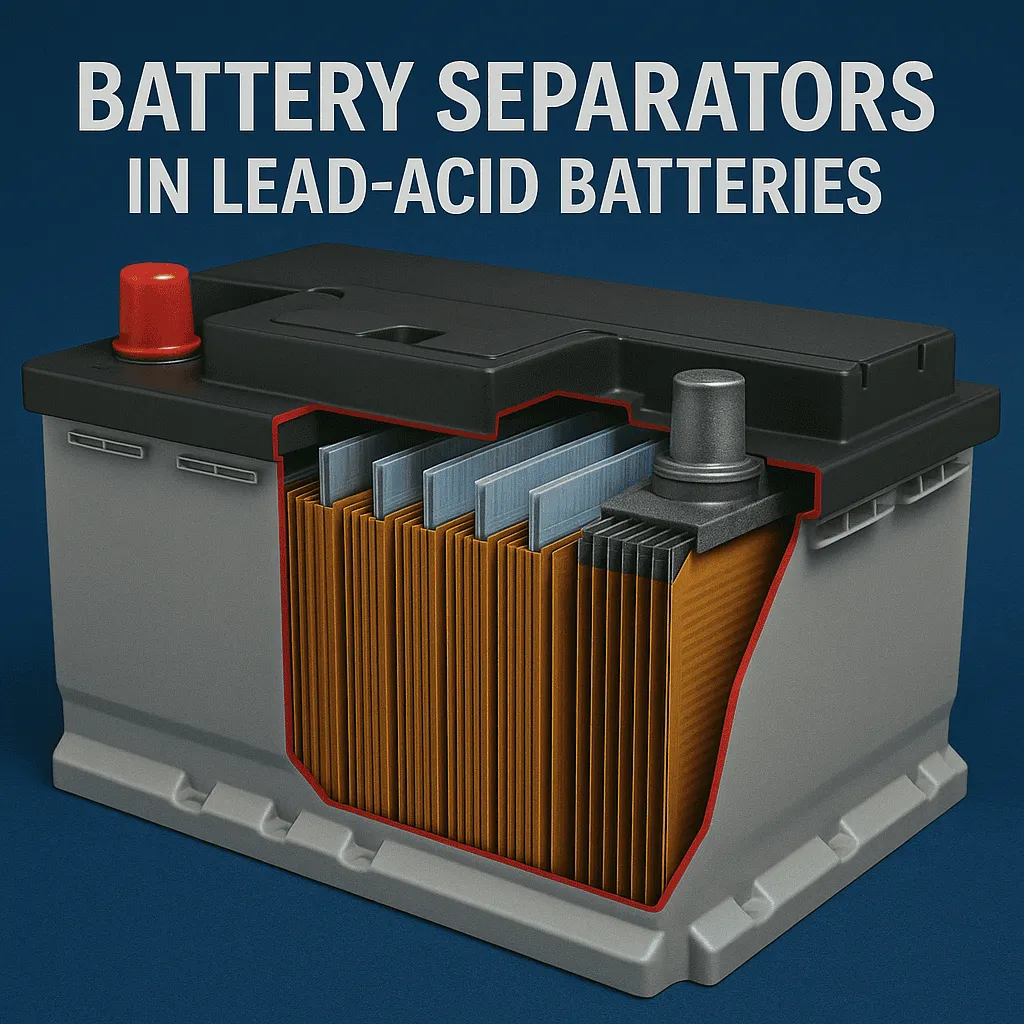The Hidden Engineering Behind Battery Separators
In the world of lead-acid batteries — from automotive starting systems to industrial backup power — much of the attention goes to the plates and electrolyte. Yet, a small, thin component quietly ensures that every charge and discharge happen safely and efficiently: the battery separator.
A separator is not just a simple barrier. It is an engineered microporous membrane designed to allow ions to flow while preventing direct electrical contact between the positive and negative plates. Its design, material composition, and manufacturing quality directly influence battery efficiency, service life, and safety.
This article examines the design principles, material choices, and manufacturing processes behind modern battery separators, with a focus on automotive, industrial, and renewable energy applications.
1. Function of a Battery Separator
The separator in a lead-acid battery is a non-conductive, microporous layer placed between the positive plate (lead dioxide, PbO₂) and the negative plate (sponge lead, Pb). It performs three essential functions:
- Preventing Short Circuits: Creates a physical barrier to stop the plates from touching, preventing dangerous internal shorts.
- Enabling Ion Transport: The porous structure allows free passage of sulphate ions during charging and discharging.
- Retaining Electrolyte: Holds sulphuric acid (H₂SO₄) within its pores, ensuring continuous chemical reaction at the plates.
In modern high-cycle automotive systems such as start-stop technology, separators must cope with rapid cycling, high currents, and temperature extremes — making material and structural quality more important than ever.
2. Separator Materials and Engineering
Modern separators are carefully designed to balance mechanical strength, porosity, chemical stability, and thermal resistance.

Common materials include:
- Polyethylene (PE): The industry standard for automotive batteries; ~0.1–0.5 mm thick with approximately, 50–60% porosity. Offers solvent resistance, good flexibility, and a thermal shutdown property at approximately, 130°C for added safety.
- Polypropylene (PP): Similar to PE but with higher rigidity and vibration resistance — often used in off-road and industrial batteries.
- Polyvinyl Chloride (PVC): Rare today, but still used in specific industrial designs for its excellent chemical resistance.
- Nonwoven Glass or Synthetic Fibres: Favoured in deep-cycle and renewable energy systems for high electrolyte absorption and low electrical resistance.
Material selection depends on:
- Battery type (flooded, AGM, EFB, VRLA)
- Operating environment (temperature extremes, vibration, cycling demands)
- Cost-performance balance
3. Separator Manufacturing Process
Separator performance begins in the manufacturing plant. While designs vary by material, typical PE separator production follows these steps:
- Polymer Blending: Mixing polyethylene with silica filler to create the desired pore structure after extraction.
- Extrusion: Producing a thin sheet with ribs or grooves to maintain plate spacing and improve acid flow.
- Stretching: Mechanically expanding the sheet to form a uniform microporous structure.
- Silica Removal: Washing out filler material to achieve the target porosity (~50–60%).
- Drying and Finishing: Final shaping, cutting, and quality checks for pore size, thickness, and flexibility.
For AGM and fibre-based separators, production involves mat forming, resin bonding, and compression to achieve controlled thickness and fibre density.
4. Performance Impact of Separator Design
Separator design parameters — porosity, thickness, and rib geometry — directly influence a battery’s:
- Energy Density: High-porosity separators allow better ion flow, enabling lead-acid batteries to reach ~30–50 Wh/kg.
- Power Delivery: Reduced ionic resistance supports high Cold Cranking Amps (400–800 CCA in automotive designs).
- Cycle Life: Durable separators resist degradation and plate shedding, extending service life to 3–5 years in vehicles, and 8+ years in well-maintained industrial systems.
- Thermal Safety: PE separators’ shutdown feature melts and closes pores at extreme temperatures, stopping dangerous thermal runaway.
FAQs: Battery Separator Technology
Conclusion: Small Component, Big Impact
While a battery separator may appear simple, it is an engineered product that defines much of a lead-acid battery’s performance, safety, and service life. From material choice to manufacturing precision, every design decision impacts ion transport, heat resistance, and durability.
For automotive, industrial, and renewable energy applications, investing in high-quality separators is essential for ensuring reliable performance in both everyday use and extreme operating conditions. As battery demands evolve, separator technology will remain at the forefront of efficiency, safety, and longevity improvements.
References:
1. Pavlov, D. (2011). Lead–Acid Batteries: Science and Technology. Elsevier.
ISBN: 9780444528827
2. Jung, J., Zhang, L., & Zhang, J. (Eds.). (2015). Lead‑Acid Battery Technologies: Fundamentals, Materials, and Applications. CRC Press.ISBN-13: 978-1466592223
3. Jung, J. (2011). “Lead Acid Battery” in Electrochemical Energy Storage and Conversion. Wiley. Wiley Online Library

